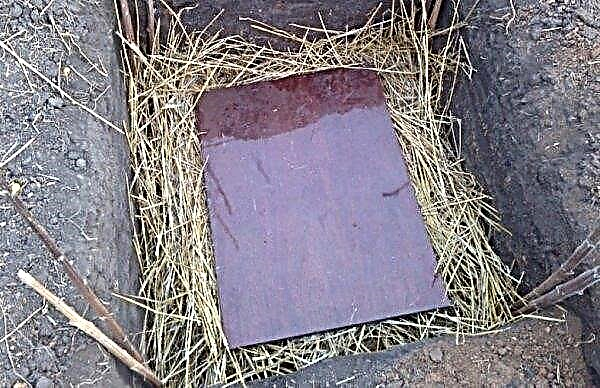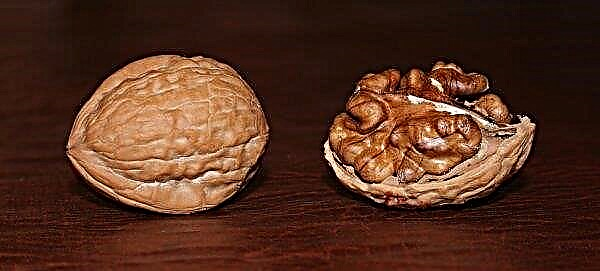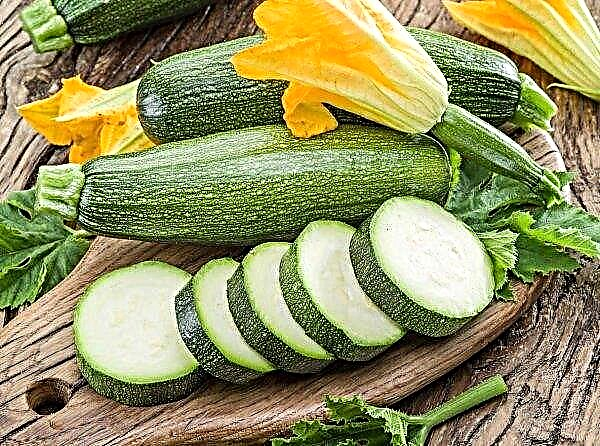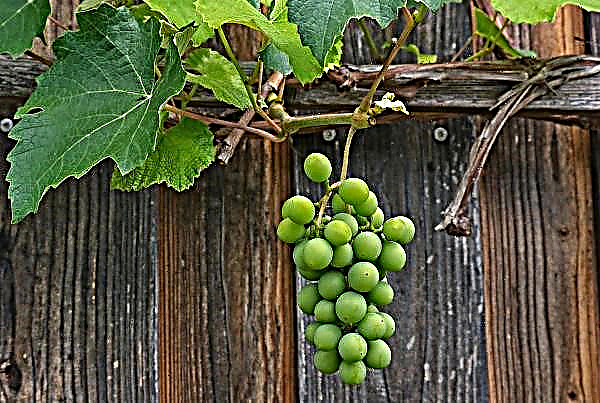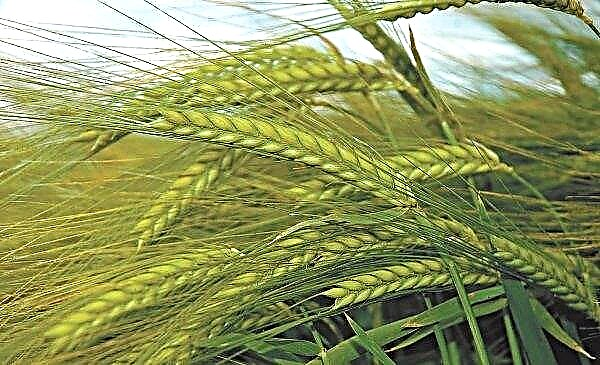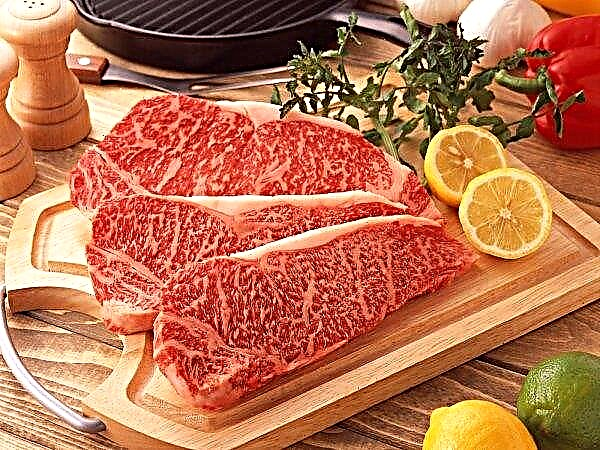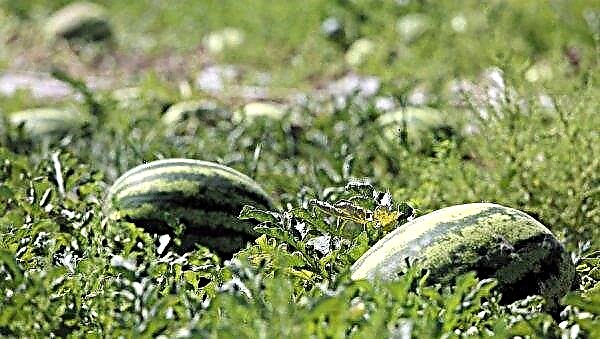Often there is such a situation: in the home garden for many years thuja was grown without problems, but on the plant suddenly cones appeared in large numbers. What this is, and what the gardener should do in this case will be described in this article.
Why do cones appear on thuja
On a thuja, which has reached the age of 12–15 years, unusual yellow-green growths appear, and an inexperienced plant grower will not immediately understand that these are ordinary cones (fruits). They are not very similar to the usual spruce or pine testes, as they are much smaller, but serve the same purpose: they give seeds that will reproduce the next generation.
Important! Pruning to maintain a given form of thuja can only be done on green and supple young stems.
This crop is not characterized by annual fruiting, most likely it will happen every 2-5 years. Seed plants are rounded, slightly flattened, consist of tightly fitted scales. After the final formation, a width of 3-3.5 mm and a length of 2-3 mm are achieved. Cones will not be yellow-green throughout the growing season.
 At the beginning of autumn, they turn brown, which signals full maturity, then open, releasing seeds. The fruits will last on the branches all winter, but in the end they will fall to the soil.
At the beginning of autumn, they turn brown, which signals full maturity, then open, releasing seeds. The fruits will last on the branches all winter, but in the end they will fall to the soil.
Can and should they be cut
Cones do not have to be removed, since their appearance is absolutely natural for the plant and does not at all reduce the decorativeness of the culture. In addition, coniferous seeds are an important source of food for many birds and animals, such as tits, crossbills, woodpeckers and red squirrels.
The presence of living creatures will give the garden an extra charm. But if the gardener believes that the cones that appear do not fit well into the conceived sculptural composition, he can tear them off manually or dispose of them at the flowering stage of the culture.
Did you know? Craftsmen with special skills by cutting method create amazing plant sculptures from thuja trees. At the request of the artist, they can depict people, animals or various objects.
How to get rid of cones
For the formation of testes, female flowers are needed, they can be identified visually - they look like the tips of the branches of a pink color. To prevent the cause of the formation of cones, it is advisable for the gardener to carefully examine the bush in the spring: this time is from April to June, depending on the region.
 If ends with coral needles are found on the branches, they need to be trimmed with secateurs, after which the fruiting of the arborvitae this year will be excluded.
If ends with coral needles are found on the branches, they need to be trimmed with secateurs, after which the fruiting of the arborvitae this year will be excluded.
Trimming and Shaping Rules
Incorrect pruning of adult conifers can harm not only the appearance of the plantings, but also the health of a tree or shrub. If you remove the excess thuja shoots incorrectly or at the wrong time of the year, this can lead to areas with brown, shriveled leaves.
Thuja branches out once a year, in the spring, at the same time as a new growth. Shoot growth occurs at the apex, where the buds are present.
Did you know? The name thuja was given to this culture by the Greek Theophrastus, a student of Aristotle, in his book History of Plants.
Correct cropping:
- Tui have a beautiful natural shape, so the requirements for haircuts are limited. Basically, the owner of the garden makes sure that the plantings do not outgrow the allocated space. Therefore, it is necessary to limit the growth of young trees and shrubs using secateurs. If you wait until the trees have matured, it will be difficult to cut branches without loss of decorativeness.

- The new growth that forms on the branches is called candles. The gardener can also control the growth of plantings by timely removal of young shoots. If you want to slow down the growth, but at the same time you want the plant to increase slightly, you can remove half of the candle in mid spring or early summer. To keep the size of the coniferous tree, it is recommended to remove the growth completely as soon as it reaches a length of 3 cm.
- It is also allowed to carry out the necessary trimming very early in the spring, but so that before the summer the wound on the wood has time to heal. If you do this too late, then in the current season the kidneys will remain inactive.
- The young growth of thuja is allowed to be cut 2-3 times a year, but at the same time, the gardener never touches the old sections of the plant. Damage to trees should not be done in hot weather or during periods of drought.
- If necessary, you can delete all dead or diseased branches at any time of the year. In this case, it is imperative to lower the cutting edge of the scissors into the disinfectant solution so that it is completely covered with the liquid. This should be done between each section, otherwise diseases (bacterial or fungal) can be transferred from one part of the plant to another.

- The problem with most conifers is that young shoots do not grow from old wood. therefore if the plant undergoes pruning, it will most likely remain in the future with holes in the crown. The only exception is Thuja plicata, which is characterized by rapid recovery. That is why gardeners recommend this variety of thuja to create a hedge.
Thuja varieties, for which the formation of cones is not very characteristic
There are many varieties of fast-growing thuja. Thanks to evergreen leaves and beautiful shape, these conifers decorate the garden, protect the courtyard from street noise, car exhausts and the eyes of strangers.
Varieties differ from each other in appearance, growth rate, color of needles. Plants below are listed with excellent suitability for shaping and pruning, as well as a low tendency to form cones.
The best varieties of arborvitae, forming few cones:
- Emerald - is one of the most beautiful representatives of culture. The plant is characterized by a compact conical crown and a very elegant intensely green color of flat needles. It can be used to create hedges of a natural or given shape. Produces a small number of testes. It grows quite quickly, and in just a few years under suitable conditions it will create a beautiful, dense plant wall without holes and gaps.
 In winter, at low temperatures, Smaragd does not change color, his needles retain the same brightness.
In winter, at low temperatures, Smaragd does not change color, his needles retain the same brightness. - Kolumna - reaches a height of about 6 m. It grows quite quickly, rarely bears fruit, so it forms few cones. 10 years after planting, the owner receives a long-term natural three-meter fence of the site. Scaly needles have a dark green color, in winter they turn brown. A characteristic feature of the variety Kolumna is a narrow, clearly defined columnar form. Thanks to this, the plant is great for creating unformed hedges. Even old trees do not lose their attractive shape and always look very aesthetically pleasing.

- Brabant - has a less distinct form than the varieties Smaragd and Kolumna. Best suited for creating hedges that will be trimmed regularly. The variety has branched, short shoots, pubescent with light green flat needles. In winter, it acquires a soft brown hue, but with the return of heat, it immediately returns to its former bright color. Every few years, covered with a small amount of brown cones., but since the variety is grown only with constant pruning, all female flowers are removed during the process, making fruiting impossible.
 Brabant is one of the fastest growing varieties of western thuja, in less than 10 years of cultivation it reaches a height of about 350 cm.
Brabant is one of the fastest growing varieties of western thuja, in less than 10 years of cultivation it reaches a height of about 350 cm. - Aurescens - Polish variety obtained in 1932 in the nursery Kurnik. It has an average growth rate, after 10 years of vegetation, the height of the plant slightly exceeds 2 m. Thuja is characterized by a compact conical shape and a weak tendency to bear fruit. Young specimens have the form of narrow columns, with age they expand slightly downwards and take the shape of a cone. The characteristic features include yellow-green needles. Young shoots are painted brighter than old ones. In winter, the crown of the tree becomes orange-brown. After the frosts cease, it immediately restores its original color.
 Aurescens reaches 8 m in height, suitable for creating shaped and natural living fences.
Aurescens reaches 8 m in height, suitable for creating shaped and natural living fences. - Europe Gold - the variety has an average growth rate; in adulthood, the plant reaches about three meters in height. Ideal for creating plantings and hedges, both undergoing haircuts, and having natural shapes. Young specimens of Europe Gold have the shape of a narrow cone, with age they begin to increase slightly in breadth.
 Scaly needles have a golden yellow color, in winter they become much darker. The variety produces a small number of cones that can be easily removed manually. The needles acquire the most expressive shade when grown in sunny places.
Scaly needles have a golden yellow color, in winter they become much darker. The variety produces a small number of cones that can be easily removed manually. The needles acquire the most expressive shade when grown in sunny places.
Important! Unlike other conifers, arborvitae do not form new buds on old wood. Therefore, if you cut off the side shoots on brown mature branches, a fresh growth will not appear on them.
Thuja is a very beautiful evergreen coniferous perennial with a beautiful shape and easy to cut. Thanks to these qualities, a patient gardener will be able to create a beautiful hedge around a garden plot or a curly plant composition in a flower bed.



 In winter, at low temperatures, Smaragd does not change color, his needles retain the same brightness.
In winter, at low temperatures, Smaragd does not change color, his needles retain the same brightness.
 Brabant is one of the fastest growing varieties of western thuja, in less than 10 years of cultivation it reaches a height of about 350 cm.
Brabant is one of the fastest growing varieties of western thuja, in less than 10 years of cultivation it reaches a height of about 350 cm. Aurescens reaches 8 m in height, suitable for creating shaped and natural living fences.
Aurescens reaches 8 m in height, suitable for creating shaped and natural living fences. Scaly needles have a golden yellow color, in winter they become much darker. The variety produces a small number of cones that can be easily removed manually. The needles acquire the most expressive shade when grown in sunny places.
Scaly needles have a golden yellow color, in winter they become much darker. The variety produces a small number of cones that can be easily removed manually. The needles acquire the most expressive shade when grown in sunny places.
